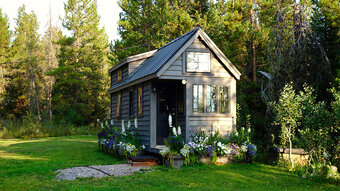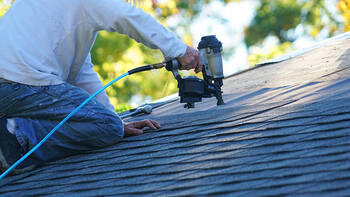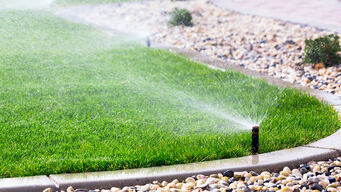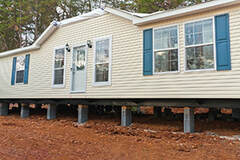Harris, Reed & Seiferth
|
|
Out of sight, out of mind! It's a saying that's too often true about making repairs around the base of your home. Problems with manufactured home skirting are common, but thankfully, replacing your mobile home's skirting is easier than you might think.
0 Comments
 If it becomes necessary to evacuate, plan for it ahead of time. Talk it over and make decisions so everyone is on the same page. Preparation can save lives and reduce the amount of time it takes to get your family to safety and eventually back home. Evacuation plan
 Hurricanes. Just the thought of them can make a person tremble in fear. Whether you've experienced a hurricane yourself or you've just heard about their destructive patterns, these bad boys know how to make their name heard. The technical definition of a hurricane is a tropical cyclone with maximum sustained winds of at least74 mph. A major hurricane is a tropical cyclone with maximum sustained winds of at least 111 mph. To put that into perspective, imagine sticking your head out the window of a car as you travel down the highway - that's the speed of wind you would be up against during a low-scale hurricane. Sound scary? It is. By knowing your vulnerability and what actions to take, you may be able to reduce the effects of a hurricane disaster. Hurricane season runs June 1 through November 30. Foremost wants to share some tips to ready your home and family prior to a severe storm, may it hit. It's never too early to:
Stay safe through these storm seasons! Your safety is number one to us. Source: https://www.foremost.com/learning-center/more-storms-to-come-during-hurricane-season.asp As of July 15, 2022, all Southern Fidelity insurance policies are canceled. If you are a former Southern Fidelity Insurance customer, Harris, Reed & Seiferth Insurance Group can help with the transition. Simply call 561-768-8176 for assistance. Below find everything you need to know about this change and how we can help you transition to another policy that meets your needs. Liquidation of Southern Fidelity Insurance Company
On June 15, 2022, Southern Fidelity Insurance Company (“SFIC”) was ordered liquidated by the Second Judicial Circuit Court in Leon County, Florida. The Florida Department of Financial Services (“Department”) is the court appointed Receiver of SFIC. A copy of the liquidation order for SFIC is available on the Department’s website, www.myfloridacfo.com/division/receiver. Please be informed that:
FLORIDA POLICIES: Citizens Property Insurance Corporation (“Citizens”) may be able to offer coverage. Citizens is prepared to write eligible policies if, after a good-faith search, agents cannot find coverage in the private market. Because of hurricane season and the short time between the liquidation of Southern Fidelity and the policy cancellation date, Citizens is working to make this easier. Citizens is prepared to:
Open Claims: If the insured property has unrepaired damage, property owners will need to take steps to repair it, have a contract for repairs, or otherwise demonstrate insurability. Submitted applications unbound for approval must include the following documentation:
Call Us Today For An Affordable, Quality Policy Harris, Reed & Seiferth Insurance Group can help you transition to an affordable, quality insurance policy that meets your needs. Please call us at 561-768-8176 and reference your SFIC policy so that our agents can assist you.  It's the holiday season again – that special time of year when you brighten your home with colorful and twinkling lights. Although decorating with electric lighting helps you create a cheerful atmosphere, it also brings an increased risk of accidental fire. Here are some important safety tips to help you avoid electrical fires, overloaded circuits and other holiday fire hazards both outside and inside your home. Outside lights
 Whether you bought a new or used mobile home, odds are that when you purchased it the design wasn’t exactly what you wanted. Builders may not use the most high-end materials on new builds, and if it’s an older model, it may be time for an update. If you ever plan to revamp a room in your mobile home, consider starting with the kitchen. It can make your mobile home look more modern, and they can have some of the best return-on-investment rates.* If you’re not sure where to start in your kitchen or if you’re looking for inspiration, you’re in the right place. Foremost® has done some research for you and put together a list of ideas you can use to give your kitchen a more updated look!
 It's so easy to get wrapped up in the notion that "bigger is better." Contentment always seems to be tragically unreachable whenever cravings for more and more consume us. We want more so-called "friends" on social media. We want more closet space for an ever-growing pile of clothing that we rarely wear. "Why yes, I'd like to supersize my meal!" we chant in a frenzy at our favorite fast food joints. Our appetites never seem to be satisfied. OK, perhaps I'm making hasty generalizations and exaggerations, but we can all at least admit to occasionally being tangled in the chaos and busyness of life. Everyone has their own tedious tasks to take on and along with them come bills to pay, relationships to build and hours of sleep to never completely catch up on. Organizing, compartmentalizing and managing all of the overwhelming "stuff" that accumulates in life can make one weary and stressed. From this perspective it's easy to see why we have the tendency to think that more money, more space, more tools, more time — more everything — will help us solve all of our problems. However, there is a group who has found contentment in having less; satisfaction in the simple life; and freedom in letting go of materialistic burdens. These unique and inventive individuals are the ones who are driving the rising tiny house movement. The tiny house movement refers to the social and architectural movement that encourages living simply, efficiently and sustainably in small homes. Just how tiny are these homes? Typically containing a living area, sleeping loft, kitchen and bathroom, these homes rarely exceed 400 square feet. Some of them are built on permanent foundations, but many of them are on wheels and are easily portable. Architect and author, Susan Susanka, is often credited with starting the movement in 1997 when she published The Not So Big House. Since then, the idea that bigger doesn't always equal better in home building has continued to grow. There are many strong advocates for the movement, like Jay Shafer, who founded the Tumbleweed Tiny House Company. Schafer's manufacturing company builds customized tiny houses and ships them to customers who are eager to pursue a simplified lifestyle. In an interview with Shareable, Schafer explains that the movement is about people not wanting to consume more than they have to. "It boils down to efficiency," he remarks. When asked about what qualifies a home as part of the tiny house movement, he states, "Any house in which all the space is being used well." Indeed, the idea of living an efficient, self-sufficient and simplified lifestyle has attracted many to the movement. The appeal of environmental consciousness is also a large contributing factor: tiny houses require much less energy and greatly reduce one's ecological impact. Lastly, tiny houses are much less expensive when it comes to building, heating and maintenance, so the more economically-balanced lifestyle that is offered through tiny house living is more than enough to draw interest. Tiny houses are capturing the attention of the public and, for many, are becoming a legitimate housing alternative. The movement is gaining increased media coverage. TV shows like Tiny House Nation, Tiny House Builders and Tiny House Hunters celebrate the exploding movement by offering building tips and spotlighting unique tiny houses and their owners. In addition, nonprofits like the American Tiny House Association and groups like the Tiny House Community are working to promote the tiny house as a formally acceptable dwelling option and are sponsoring workshops, fairs and conferences that bring together builders and enthusiasts. Online communities like Living Big in a Tiny House, Small House Society, The Tiny Life and Tiny Home Builders create opportunities for people to connect and share advice and stories from their tiny house lifestyles. Though living in a tiny house may not be for everyone, there is definitely something we all can learn from the movement. Learning to share, adapting more efficient and sustainable practices and choosing to live freely and fully by slowing down and taking the time to refocus on what's truly important in life are certainly all commendable endeavors. Foremost offers solutions for insuring tiny houses. If the unit is on permanent foundation and attached to permanent facilities, it is eligible for a Dwelling Fire or Specialty Homeowners policy. If the unit is RVIA approved, with the wheels still intact, it is eligible for a Travel Trailer policy. Source: https://www.foremost.com/learning-center/Understanding-the-Tiny-House-Takeover.asp  You may tend to overlook your roof, but it's actually the most important component of your home - and the most vulnerable. It protects you from the elements like rain, snow and sun, but roofs don't last forever! I didn't really think about the importance of roofs until recently when my friend and her husband bought their first home. It was built in the late 40s, and since she moved in she's been saying how badly her roof needs replacing. Of course, that was five months ago, and work has still yet to be done. I then thought to myself, is putting off the project really going to affect you that much? The answer is, yes! So — I began to research how one would go about replacing or repairing a roof. The first order of business: understand the relationship between the age of your roof and its life expectancy. According to the Good Housekeeping magazine, shingle roofs should last between 20-30 years (if you have a different type of roof, such as metal or clay tile, you may have to follow different rules). If your home is new or the roof was recently replaced, you should be in the clear. However, it doesn't hurt to do a checkup after getting hit with severe weather like a hailstorm, ice and snow or crazy rain. If your roof is getting close to its 30th birthday, keep your eyes open for warning signs that tell you it's time for a revamp. Here are a few things to look out for:
According to Home Advisor, a roof replacement can range anywhere from $2,000 to $7,000. The size of your home, the materials used and where you live will affect that price range. It's no small sum, but in return for the investment, you'll add thousands of dollars to the resale value of your home and ensure a safe and habitable dwelling for years to come. Don't need a new roof right now? Do a quick check each month to see if maintenance is needed. If you notice problems like missing shingles or signs of water damage, be sure to call a roofing specialist to make the repairs as soon as possible - it could save you a bundle by prolonging the life of your roof and stopping costly leaks in their tracks. Source: https://www.foremost.com/learning-center/when-to-show-your-roof-some-love.asp
 I am guessing I'm not the only one who doesn't want to share their home with eight-legged strangers. When I see those creepy spiders crawling across my floor I immediately feel like I need to check under every chair, table and rug for the rest of their families. Of course, in the part of the country I live in, the spiders are harmless, but that doesn't stop me from feeling just a little uneasy when crawling friends start taking over my home. It's starting to get warmer out and that means that my home is beginning to be infiltrated with spiders! Because of that, I feel the need to share some tips and tricks for keeping those creepy, crawly creatures out of our homes: Outside:
Source: https://www.foremost.com/learning-center/spiders-making-your-home-their-home.asp
 After what felt like an endless winter, everything is slowly starting to thaw out and melt. Spring is one of my favorite times of the year, and as a new homeowner, I am starting to observe new things on my home that I need to inspect, and projects I want to tackle this summer. I purchased my home in the dead of winter with snow piled up on the exterior, so I couldn't fully see everything as much as I would have liked. Now that I have a clear view, it's time to start my spring maintenance checklist and inspect for any damage sustained during winter.
Source: https://www.foremost.com/learning-center/inspecting-your-home-after-winter.asp
|
Categories
All
Archives
May 2024
|
Social MediaContact UsNavigation |
|
Website by InsuranceSplash
Privacy Policy | Terms of Use
© 2025 by HARRIS, REED & SEIFERTH INSURANCE GROUP, INC. All rights reserved.
© 2025 by HARRIS, REED & SEIFERTH INSURANCE GROUP, INC. All rights reserved.




 RSS Feed
RSS Feed